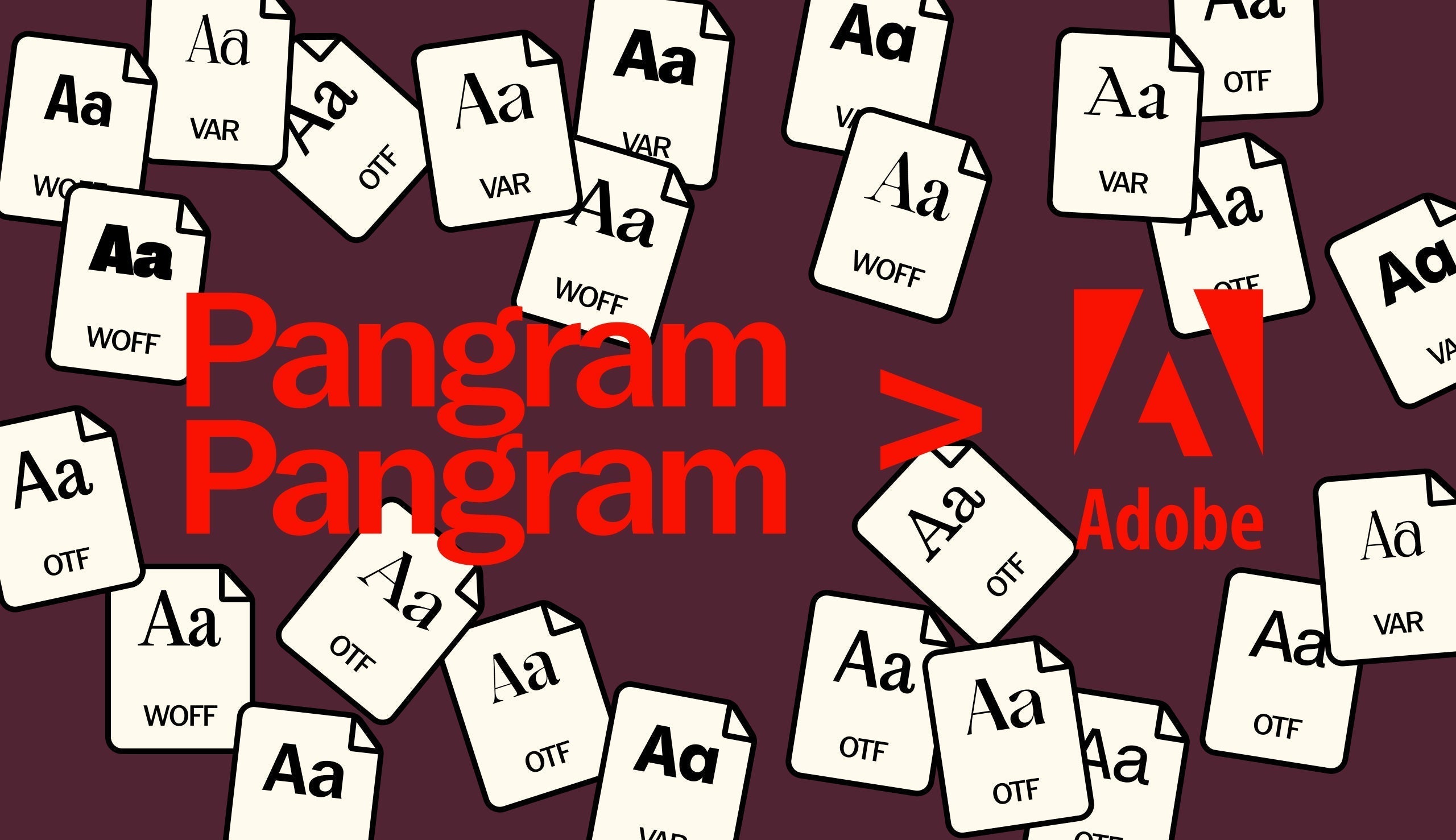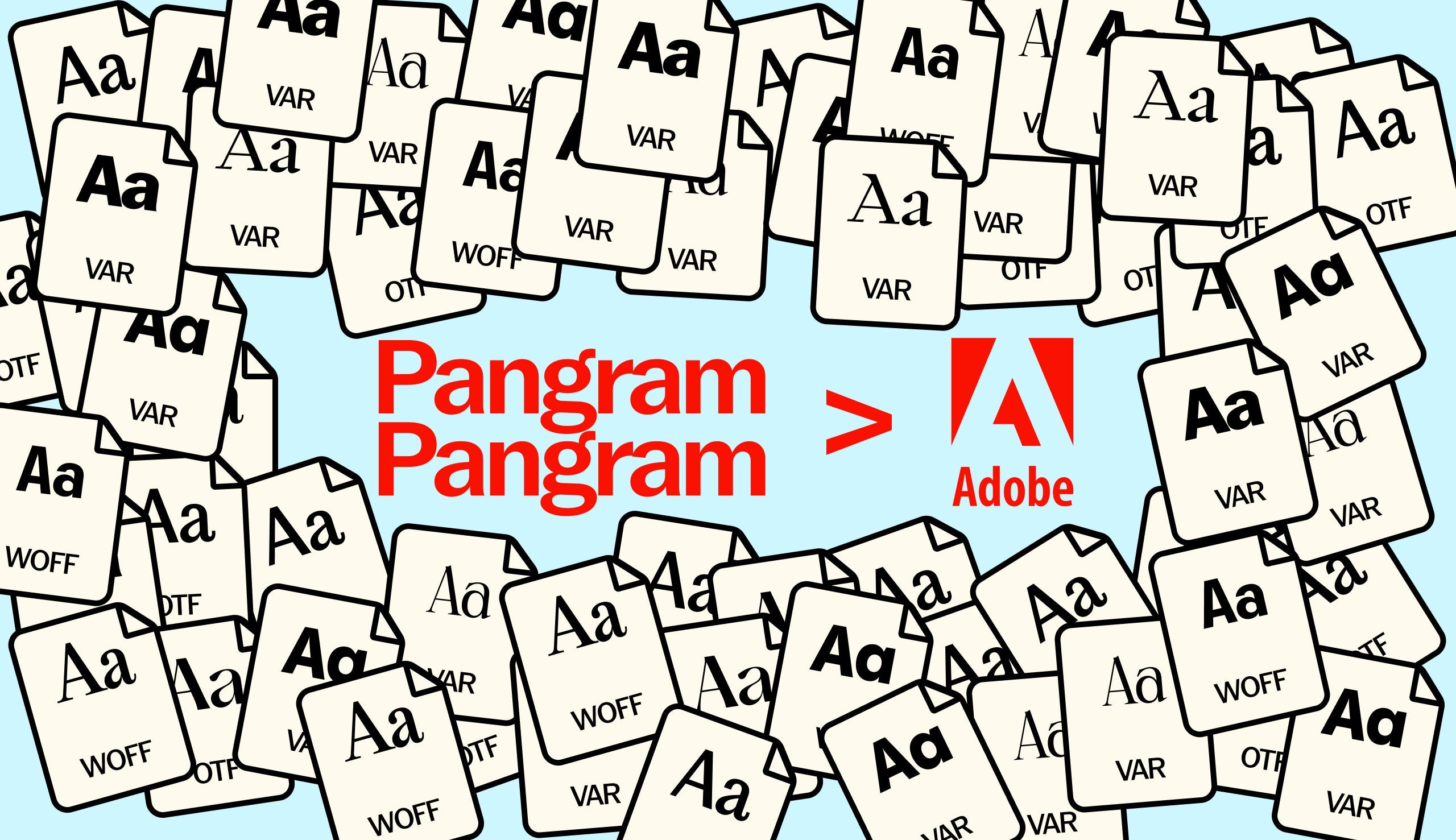This week on the Pangram Paper, we've welcomed Amber Weaver, founder of FEMME TYPE and TYPEONE, to share her thoughts on the type design industry, the work it has left to do, and how you can help.
Like most other design fields, type design has diversity and inclusivity issues. Just like the rest also, communities are actively seeking ways to influence positive change and to set a new standard in our playing fields which is fantastic to see. So not all is lost. The importance of visibility, inclusion and supporting under-represented communities in all spaces is, without a doubt, incredibly significant. Showing creatives that there are people out there who look, sound and come from the same place as them acts as a powerful beacon of hope and inspiration. They can see that if they can do it, so can they. When I started Femme Type, whilst uplifting designers in the community, I could already begin to see the (exciting) chain reaction of positive results as more began to practise the craft and more came into the light, which we celebrated as much as we could. We were beginning to see the value of diversity through these typographic outputs and the people behind them - diluting the pool of the male-dominated circuit that was so highly valued.
Femme Type's mission was and still is to create a space where the typographic contributions of women could be seen, uplifted and valued by the industry. I noticed in 2018 that this group weren't getting talked about enough, and I made it my purpose to find them, champion them and call out the type design industry for its seemingly male-dominated circuit that needed to be diversified. 3 years on, and we've uncovered numerous designers from all walks of life who identify as women or non-binary, which has hopefully (I say boldly), changed the course of history forever about who new designers learn about when studying who came before them. Not only that, but it also offers a diverse and dynamic pool of perspectives and personalities, breaking circles of uniformity.
However, it's not all peaches and cream here. We've still got plenty of work cut out for us as an initiative. Whilst we've found more talents to help diversify the industry, the ethnic demographic of those designers still has a shockingly unbalanced ratio. Finding women and non-binary people of colour who design typefaces/work with type is a challenge, and the literary series Black Designers Forward in Action by Cheryl D. Holmes-Miller offers insightful and valuable perspectives that help explain why this is (from a general design industry perspective). In TYPEONE Magazine's fourth issue, I touched on the three A's, accessibility, affordability and awareness; all three outlined as issues that the type design industry still faces. After identifying them and as an expansion, I've listed a series of suggestions below about how we can make positive changes in our industry today; I hope it inspires you to take action.
Ten ways we can increase diversity in type design.


1. Education Reform
This is the most significant change that could contribute to a more diverse type design industry. By the time a student gets to university, the three A's I mentioned earlier begin to come into play, squeezing the number of students going into the design field. Therefore, my suggestion is to target students at the college level (16-18years for UK students).
Back in my day, there was no Graphic Design A-Level; I had to do just an Art A-Level. Today though, I know it's offered as one, which is an excellent start to making young designers aware of the craft. I think this is the most efficient and effective entry point as students in the UK have to attend college, which is free. So before the financial implications and the commitment to studying to become a designer comes into play, this gives EVERYONE a fair chance at pursuing it as a career. This way, we can plant a seed early on to get them inspired and learn about how type design can be a successful profession and highly sought-after skill.
To start even earlier, you can introduce a very basic type design module or class at secondary school (years 11-16 in the UK), perhaps leaning towards the older years, though. I'm sure one of them will get hooked by giving them a taste of what designing a letter system is like.


2. Resources
It's clear that there are communities we can do better to support and include, particularly if we have broken systems that work better for one group over the other. In addition, the education system may be too large and complex to tackle, so resources are next on the list.
Creating resources, particularly affordable ones, are a fantastic way to provide the tools for people to become a type designer. Particularly if they didn't choose, or more significantly, couldn't choose the university and masters route for whatever reason. I've seen talented creatives teach themselves the craft with an impressive amount of discipline and skill - yes, university has benefits. I won't deny that, but it's not impossible to become good at something without a degree these days.


3. Funding & Mentoring
The education system and things like online courses are ways to nurture one's abilities in the field of design; another I'd like to put forward is mentoring. As defined by Google, mentoring is a relationship between two people with the goal of professional and personal development. This passing on of knowledge, I feel, is another lifeline for aspiring designers who are unable to take the university route, and I generally feel the industry could do better at this. I'm sure there are those out there who believe you need a degree in type design to succeed as a type designer; however, I've seen that's not the case. In fact, perhaps there's a massive perk in NOT going the university route, following the same route, as thousands of other students are all taught the same approach and made to do the same types of projects. As a result, you come to the relationship less polished, in a good way, not to mention avoiding the masses of debt that can amount from higher education.
In addition, funding opportunities are also important to help serve wider communities more inclusively. A brilliant example is the Male scholarship run by Sharp Type Co-Founder Chantra Lee, who awards the winner $6,000 USD to a woman of colour over 16 years of age. On top of that, the annual recipient is accepted onto the mentorship program with the Sharp Type team, who provide professional & creative guidance with the production of their typeface. Fantastic resource, which we need more of throughout the world.
I'd like to think that it's each generation's responsibility to pass on their skills and learnings to the next generation. I truly admire those who choose this noble role; I know I certainly aspire to be one someday.
4. Diversity your Circle
Do you see the same designers propping up on your social media feeds? Yes? Time to expand your circle then. Connect with platforms that are diverse and inclusive with their content, or you can hone in on platforms that are all about diversity and inclusivity. Some examples are, Design by Women, Where Are All The Black Designers?, Creative Lives in Progress, Type Equality, Alphabettes etc. Find designers you find inspiring and give them a follow, add as a favourite and save their content; the algorithms should do the rest.


5. When you see someone doing great things, share their work. Uplift them.
Not only can this make someone's day, but it also has a knock-on effect and helps others (including your followers who you just shared with) tap into wider communities to get seen and spotlighted.
6. Diversify our type landscape
I refer to diversity as not just the people who practise type design but the fonts too. Whilst the Latin market has some stunning typefaces, it's heavily saturated. I feel the industry has become too euro-centric at times. Did you visit a country that made you fall in love with its culture? Why not learn about its language history and connect with others from that community who are type designers. If you love to design type, why not try learning to create type for another language? Remember it's important to be conscious, particularly if you aren't from that country nor share its culture. I would always suggest connecting with a local type designer or graphic designer to collaborate with, so you pay the proper respect to the language system and culture.
7. Befriend a type designer you like 🥰
They're very friendly people who LOVE type. If you love type too, get to know them.
8. Give back to the community
If you're a type designer and only have your skillset to offer, then why not offer to do a workshop at a local school or college to inspire the next generation. You're probably the best person to talk about how great the work is!


9. Be conscious
Are you a designer and are about to use the same group of typefaces that you default to with each project? Then, venture out of your comfort zone and see what's out there. I guarantee you'll be pleasantly surprised, and as always, make sure you're choosing the font for its context and quality.
10. Stay positive. Take Action
This is a steep mountain to climb, so staying positive and taking action are essential. The more aid we get, the quicker we'll be able to climb it and make these all-important changes to help increase diversity and inclusion in the world of type design.









